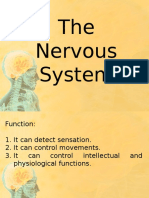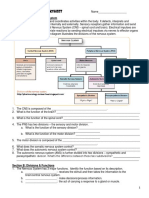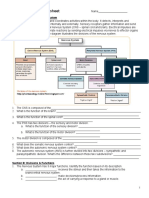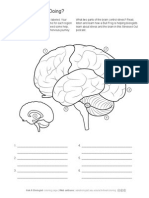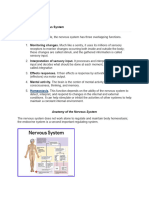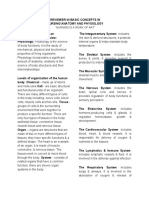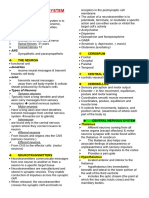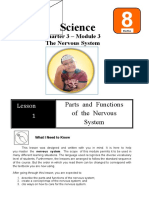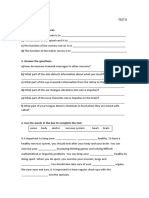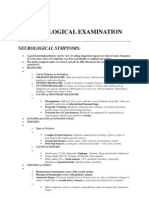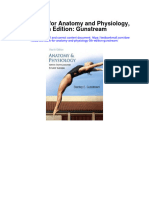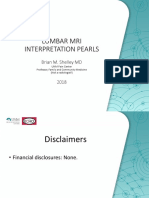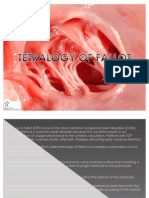0% found this document useful (0 votes)
867 views12 pagesNervous System Worksheet
The nervous system regulates and coordinates activities within the body by detecting, interpreting, and responding to internal and external changes. Sensory receptors gather information and send electrical impulses to the central nervous system (CNS), composed of the brain and spinal cord. The CNS processes the impulses and sends responses via nerves to effector organs like muscles and glands. The peripheral nervous system (PNS) connects the CNS to sensory receptors and effectors. The autonomic nervous system is a division of the PNS that controls involuntary functions through the sympathetic and parasympathetic systems.
Uploaded by
Leamae ObinaCopyright
© © All Rights Reserved
We take content rights seriously. If you suspect this is your content, claim it here.
Available Formats
Download as DOCX, PDF, TXT or read online on Scribd
0% found this document useful (0 votes)
867 views12 pagesNervous System Worksheet
The nervous system regulates and coordinates activities within the body by detecting, interpreting, and responding to internal and external changes. Sensory receptors gather information and send electrical impulses to the central nervous system (CNS), composed of the brain and spinal cord. The CNS processes the impulses and sends responses via nerves to effector organs like muscles and glands. The peripheral nervous system (PNS) connects the CNS to sensory receptors and effectors. The autonomic nervous system is a division of the PNS that controls involuntary functions through the sympathetic and parasympathetic systems.
Uploaded by
Leamae ObinaCopyright
© © All Rights Reserved
We take content rights seriously. If you suspect this is your content, claim it here.
Available Formats
Download as DOCX, PDF, TXT or read online on Scribd
/ 12
